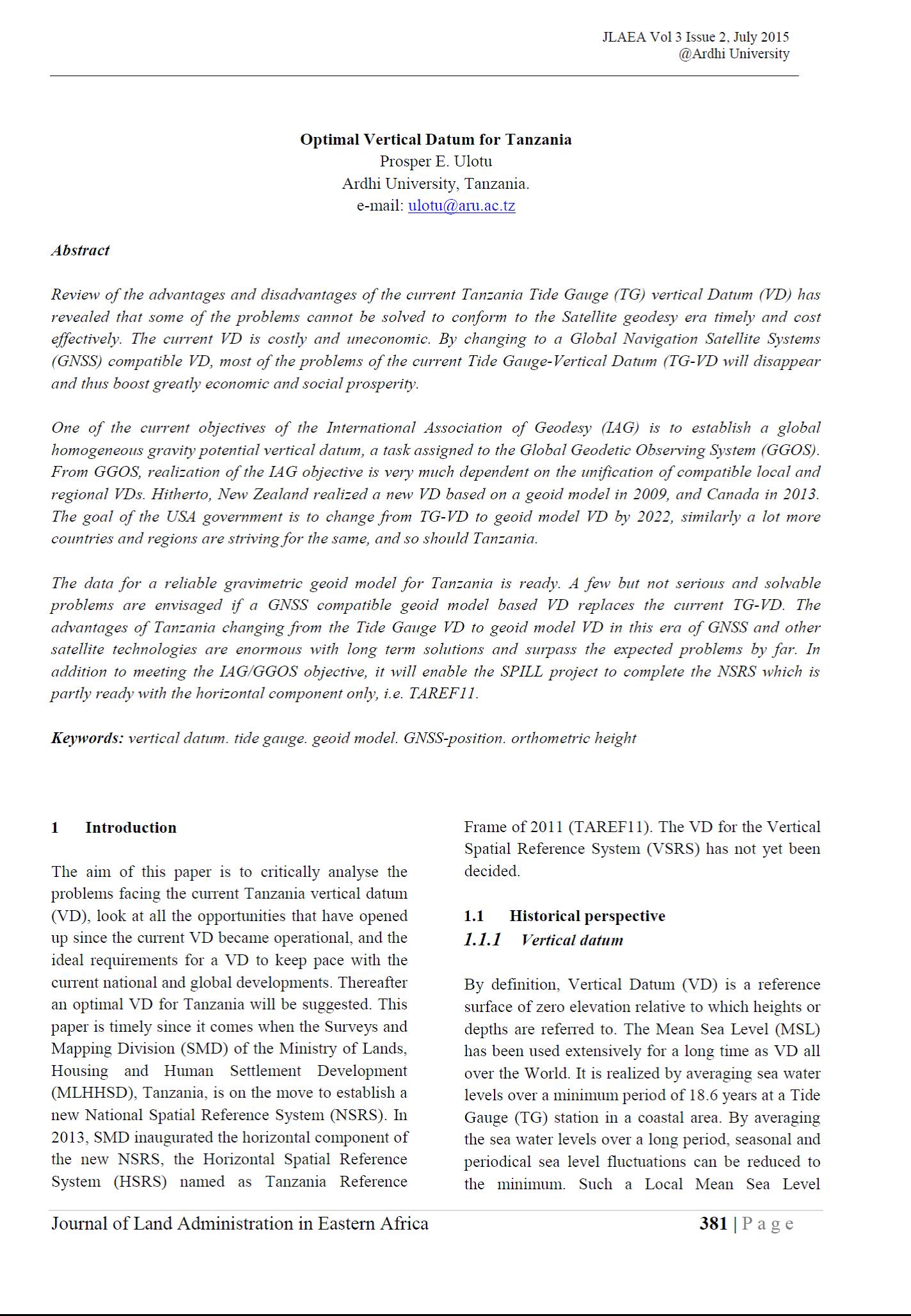Resource information
Review of the advantages and disadvantages of the current Tanzania Tide Gauge (TG) vertical Datum (VD) has revealed that some of the problems cannot be solved to conform to the Satellite geodesy era timely and cost effectively. The current VD is costly and uneconomic. By changing to a Global Navigation Satellite Systems (GNSS) compatible VD, most of the problems of the current Tide Gauge-Vertical Datum (TG-VD will disappear and thus boost greatly economic and social prosperity.
One of the current objectives of the International Association of Geodesy (IAG) is to establish a global homogeneous gravity potential vertical datum, a task assigned to the Global Geodetic Observing System (GGOS). From GGOS, realization of the IAG objective is very much dependent on the unification of compatible local and regional VDs. Hitherto, New Zealand realized a new VD based on a geoid model in 2009, and Canada in 2013. The goal of the USA government is to change from TG-VD to geoid model VD by 2022, similarly a lot more countries and regions are striving for the same, and so should Tanzania.
The data for a reliable gravimetric geoid model for Tanzania is ready. A few but not serious and solvable problems are envisaged if a GNSS compatible geoid model based VD replaces the current TG-VD. The advantages of Tanzania changing from the Tide Gauge VD to geoid model VD in this era of GNSS and other satellite technologies are enormous with long term solutions and surpass the expected problems by far. In addition to meeting the IAG/GGOS objective, it will enable the SPILL project to complete the NSRS which is partly ready with the horizontal component only, i.e. TAREF11.


